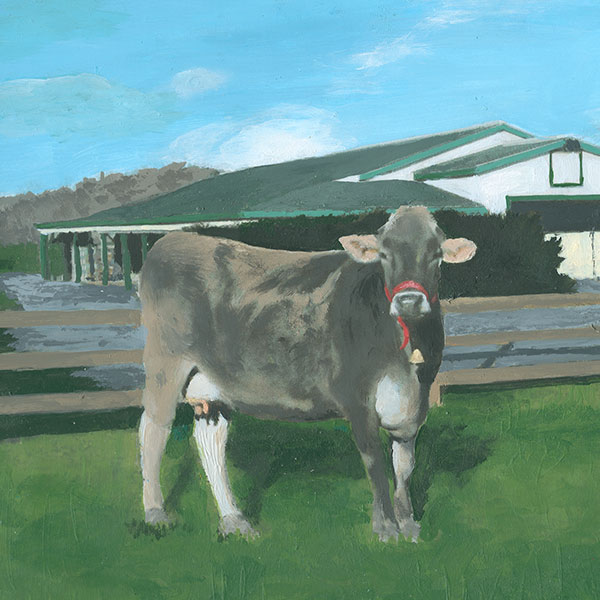Subtotal: $
Checkout-

Waging Peace in the Culture Wars
-

Insights on Peacemaking
-

Forgiveness Is Not Fair
-

The First Need of the Church
-

Poem: Errand
-

The Children of War
-

Mikalojus Konstantinas Čiurlionis: The Hymn
-

What Gandhi Taught Me about Jesus
-

The Future of Christian Nonviolence
-

Nonviolence: An Impossible Ideal?
-

Is Pacifism Enough?
-

Disruptive Peacemaking: Living Out God’s Impossible Standard
-

Poems: Damascus Plumbed, Fiddlesticks
-

The Blessings of Conflict
-

From Small Seeds, Great Things Grow
-

The Legend of Heliopher
-

The Face of Nonviolence in a Violent Century: A Review Essay
-

Editors’ Picks Issue 5
-

Everyone Belongs to God
-

Badshah Khan
-

Readers Respond: Issue 5
-

Crossing a New Rubicon
-

Family and Friends: Issue 5
-

Featured Books Summer 2015
-

Jesus Abbey

Next Article:
Explore Other Articles:
Smooth, creamy yoghurt, whipped and cool, with a bit of sugar. Where does it come from? From our five-year-old Brown Swiss cow, Milka.
The milk is treated and the yoghurt is prepared by dairy enthusiasts in our community of two hundred, where it is enjoyed by children and adults alike.
Brown Swiss cows are known for their docile temperament, longevity, good feet and legs, and high production. Originally bred in the Alps, they may be one of the oldest breeds of dairy cows, and the protein-to-fat ratio in their milk is ideal for cheese-making. One Brown Swiss, Glad Ray EJ Paris of Ohio, presently holds the world dairy record for lifetime combined pounds of protein and fat; she is still going strong at age seventeen.
Named after the Swiss milk-chocolate brand, Milka is treated royally by everyone involved in our community barn – from the kindergartners who poke handfuls of hay to her through the fence, to the schoolchildren who help feed, water, and brush her, to the adult volunteers who milk her each morning and evening and then pasteurize the daily yield. Other volunteers include the electrician who fixed the motor on the vacuum pump, the plumber who put a new floor drain in her stall, and the farmer who grinds, mixes, and delivers her feed. It truly takes a whole village to raise a cow.
She accepts all this attention with unassuming aloofness, or with a playful kick and a run around her pasture, her tail slapped up over her back. In return, she presented us last year with a healthy bull calf who now weighs seven hundred pounds, and she gave us 17,833 pounds of milk – more than eleven times her body weight – during her ten-month lactation.
Milka is a teacher, too, if we are wise enough to listen – she shows us how to responsibly care for her and for the rest of God’s creation. By her behavior, she lets us know that if we keep her clean, dry, and comfortable, she will do her best to produce milk. A bemused shake of the head gently rebukes anyone who splashes her when filling the water tub. She tells us when she wants to be milked and when her udder is sore. (If it is, there’s always a reason, and she makes it clear that we had better fix the problem fast!) She is curious, investigating anything new in her domain; on rainy days my black umbrella is closely eyed and thoroughly sniffed. We too should be attentive to and curious about the world around us.
Milka moderates the behavior of us humans who care for her. If we rush and are impatient, she becomes nervous. When we treat her well, she responds calmly and generously. Perhaps, in reality, it takes a whole cow to raise a village.
 Milka, the community cow, poses for her portait, painted by one of her loyal fans.
Milka, the community cow, poses for her portait, painted by one of her loyal fans.
Mahlon Vanderhoof is a teacher at the Fox Hill Bruderhof community in Walden, New York.
Already a subscriber? Sign in
Try 3 months of unlimited access. Start your FREE TRIAL today. Cancel anytime.

































